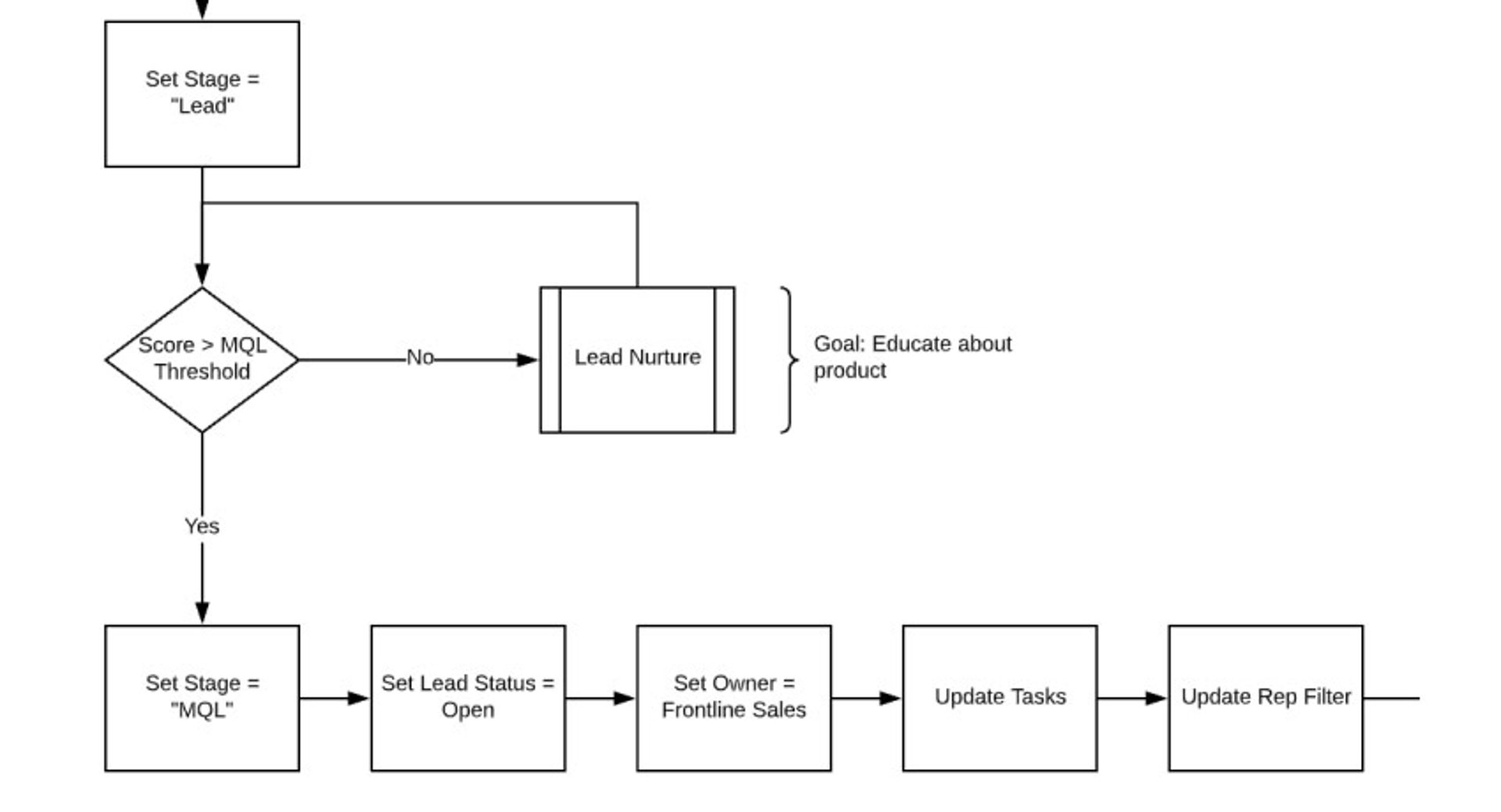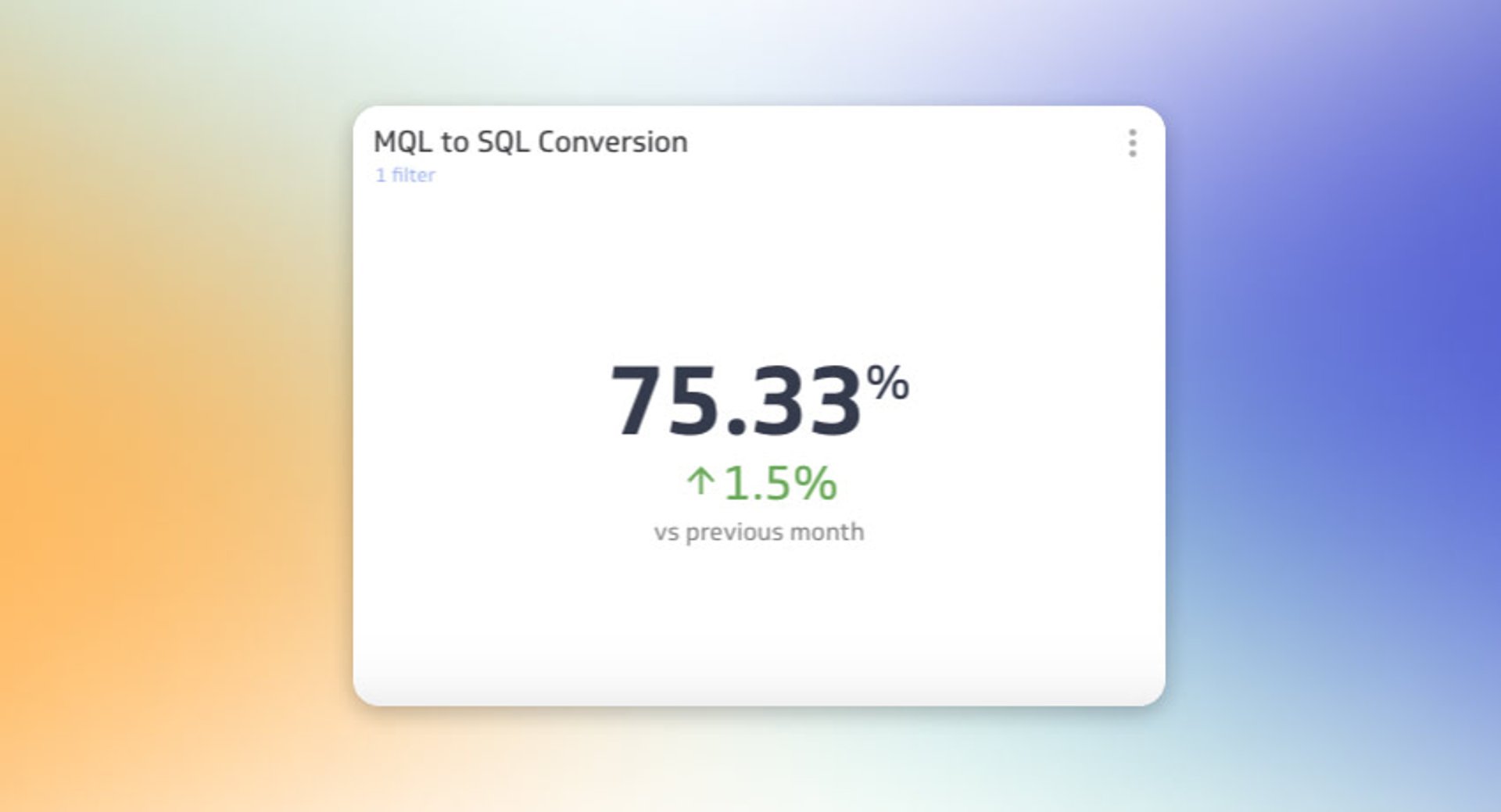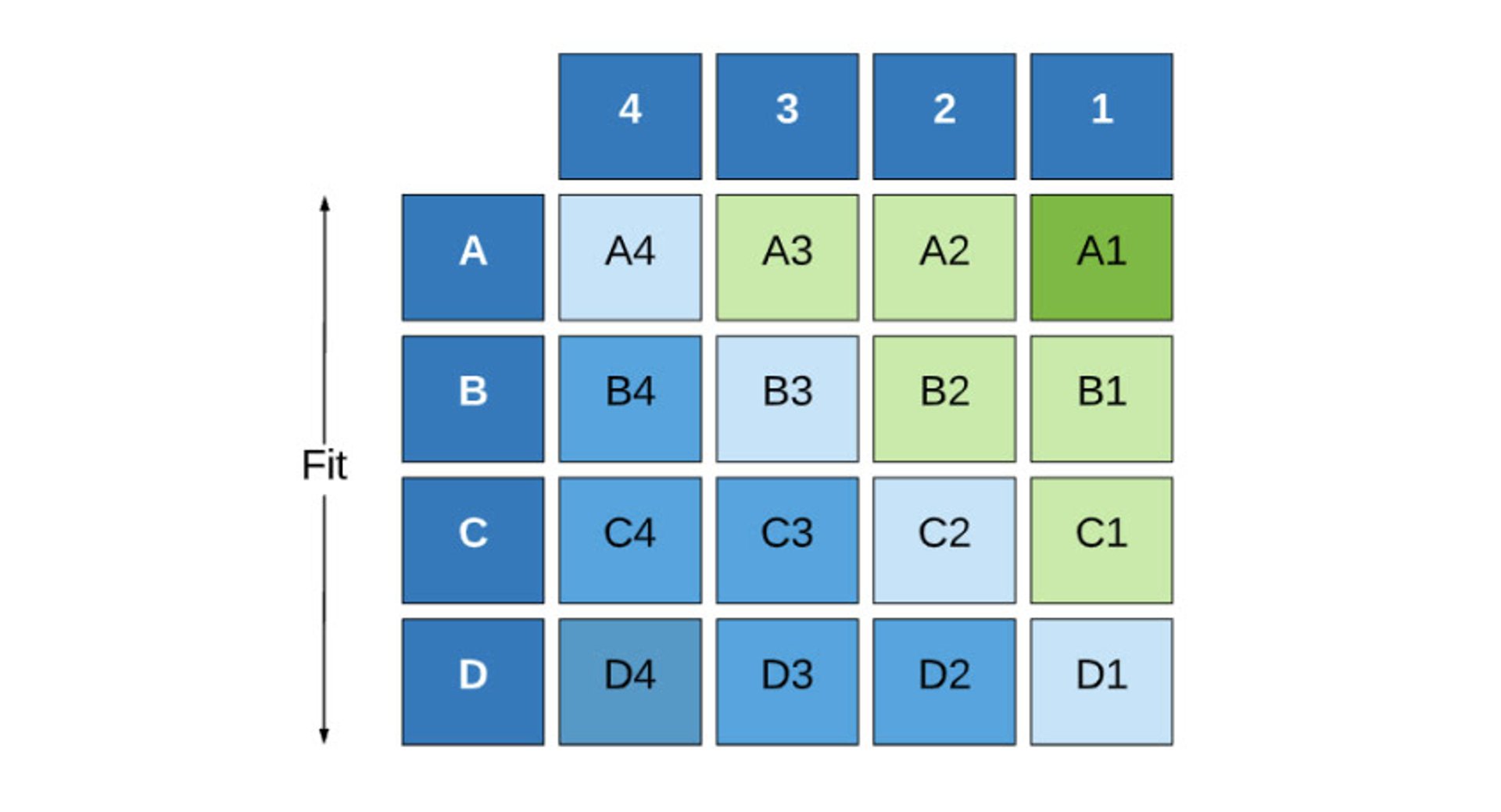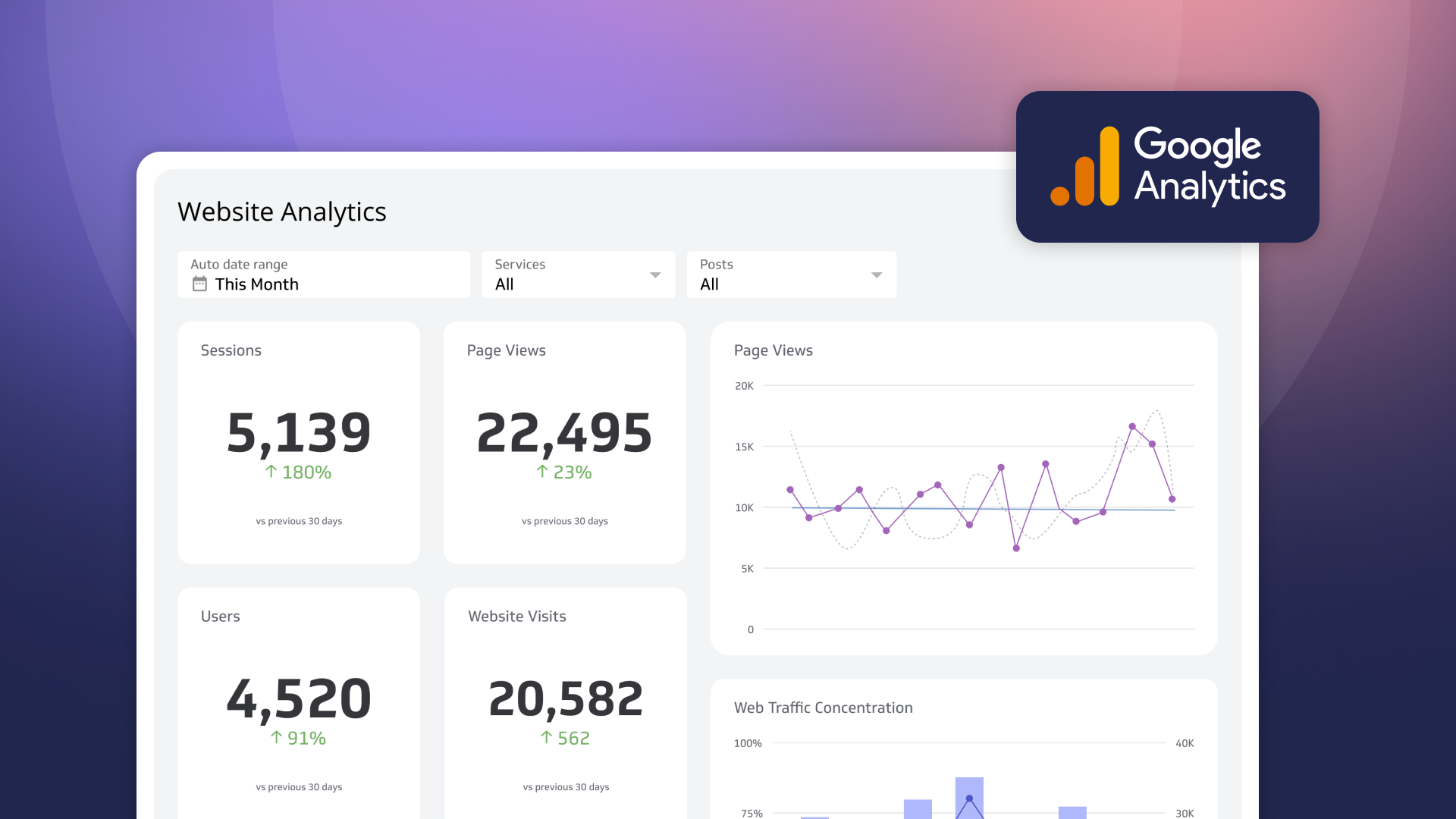Picking an MQL model for your HubSpot instance

Published 2023-10-13
Summary - One of the first things you'll encounter as a new HubSpot user is the need to create a lifecycle model. How do you know which lifecycle model is right for your business?
Check out Klipfolio on HubSpot's App Marketplace
One of the first things you'll encounter as a new HubSpot user is the need to create a lifecycle model.
By default, HubSpot includes out-of-the-box properties and automation for your lifecycle to help you get started. But you still have a lot of important decisions to make to get to MOPs nirvana. And a lot of it comes down to blending marketing operations and business processes to get there.
One of the most important stages in your lifecycle is the Marketing Qualified Lead (MQL) stage. Why is the MQL stage important? This is a hand-off point between sales and marketing. When a contact becomes an MQL, this will not only kick-off workflows in HubSpot but it will signal to your sales team that a new contact is ready for outreach.

While many are declaring MQLs dead, the model itself is still the foundation for many sales and marketing teams. In my experience, few teams can succeed without some signal that a prospect is ready and willing to talk with sales. Call it whatever you want – the spirit of the MQL is alive and well.
The post-MQL world doesn't disregard this – they build off it and incorporate modern marketing tools and tactics into their process. Similarly, MQL models are evolving. Tools like conversational marketing and product-led initiatives are used to grow revenue and strengthen the bond between sales and marketing.
In this post, I'm going to walk you through the models used to define MQLs. Even if you don't pick one of these models, it'll be a solid overview to how marketing operations pros can approach the sales and marketing process.
What is a marketing qualified lead?
A marketing qualified lead (MQL) is a prospect who meets predefined criteria that suggests they are likely to convert. Once a prospect reaches the MQL stage, they are ready for sales outreach. Ideally, the criteria for MQLs is backed by data and experience that signals that the lead is more likely to convert to a customer.
HubSpot defines an MQL as a “lead that the marketing team has deemed more likely to become a customer compared to others”.
Too often marketing operations folks get hung up on the “how” instead of the “what” and the “why”. Let's center on the why – we define MQLs to streamline the sales and marketing process and to become even more effective at generating revenue.
If the best model for your team is to hand pick MQLs, then do that. Be pragmatic but also be open to trying things. As a former HubSpot and Marketo consultant, I've seen numerous permutations from the rudimentary to the ultra sophisticated work exceedingly well (and poorly).

How do you judge the effectiveness of your MQL process? Revenue is the obvious choice, but it's a lagging indicator. I think you should be looking at your MQL to SQL conversion rate (also called MQL acceptance rate). Since MQLs are transitory they will either progress to the next stage by being “accepted” by sales or be reverted to a previous stage. I aim for an MQL to SQL conversion rate of >80% to evaluate the effectiveness of my MQL model.
Types of MQL models
The most common MQL models are:
- Hand picking MQLs
- Direct response to a campaign
- Lead scoring models
- Product-led MQLs
Each model has its strengths, and you'll want to pick one that makes sense for your current setup. Let's dive deeper into each model so you can make an informed decision.
Hand picking MQLs
A hand-picked MQL is one that marketing has specifically identified and passed over to sales. In the age of marketing automation software, it seems primitive and unscalable but you'd be surprised how often this happens.
Often, this is the default starting position for businesses for two reasons: they don't have a marketing automation system like HubSpot in place, or they don't have an in-house expert to build an automated MQL process.
As a marketer, our mantra ought to be “know thy customer.” If we're true to this, then we should be good at identifying qualified prospects.
Of course, even if the quality and acceptance rates are high, this model doesn't scale as you grow your inbound marketing engine.
Direct response to a marketing campaign
A direct response MQL is a contact who has engaged with a campaign, signaling that they are highly engaged and/or sales ready. This includes filling out a demo request form, responding to an offer from direct mail, or starting an online chat conversation on your website.
These are your hand raising prospects – the ones who are directly or indirectly asking for sales engagement. Your job as marketing is to get these contacts in front of sales as soon as possible. In HubSpot, this means doing things like:
- Setting up workflows to alert sales reps of a hot lead
- Setting up automated emails to respond to prospects to let them know you got their message
- Giving prospects direct access to sales rep calendars on demo forms
Every inbound marketing team on the planet has some form of a direct response marketing campaign (unless your website is completely free of forms, chat widgets, and information about your phone number). As you build out your MQL process, you're not looking to move away from this model but rather incorporate it into more advanced models.
Lead scoring model
A lead scoring MQL model is one that uses marketing automation to assign grades or scores to each contact in your system. This is the most common model for generating MQLs in an inbound marketing framework.
The reason it is so popular is that it's reliable, scalable, and relatively accurate. That said, within the lead scoring paradigm, there are a few different sub-models that you can use:
- Numeric scoring
- Scoring matrix
- Algorithmic scoring programs
Let's dig into each model in detail.
Numeric scoring
A numeric lead scoring model is used to provide a score or grade for each contact in your database. This score can be a single property; it may also be a sum of multiple scoring properties, such as behavior and demographic scores.
This is the gateway model for lead scoring. It's relatively straightforward to set up and implement – a few workflows or modifying the HubSpot Lead Score property, and you're set up. The most common implementation I've seen is summing Behavior Score and Demographic Score to create an aggregate Lead Score.
One of the footnotes on this model is that you can generate false positives. For example, a highly engaged prospect may be able to overcome a lower demographic score and still make it to sales. Likewise, prospects that check all demographic attributes may be deemed sales-ready before they've engaged with your marketing or product.
I've seen a lot of success with this model over the years. However, it's really important to continuously evaluate your scoring criteria and check in with sales on lead quality.
On paper, the model is simple. As you discover exceptions to your lead scoring rules (e.g., highly engaged leads from a poor geographical location), you will need to amend the model and reroute leads that may be false positives.
Here's a really basic example of setting up this scoring model.
Behavior score
- +50pts for form fill
- +5 pts for email clicks
- +15 pts for pricing page visit
Demographic score
- +15pts for target role(s)
- +15pts for target geo(s)
- +5pts for corporate email
Add it all up, and you've got your numeric score represented as a lead score.
One thing that I don't love about this model is that quality is represented purely as a score – the higher the score, the better the lead, or so the thinking goes. I've found this confusing in the past, and the score often obfuscates what attributes are being evaluated to determine the MQL status.
Scoring matrix model
A scoring matrix model groups prospects on two axes: one axis looks at Fit and the other looks at Engagement. As opposed to the numeric scoring model, this model doesn't display an aggregate score, rather, it groups contacts into buckets.

The scoring matrix builds off of the numeric scoring model and uses all the same ingredients. Fit is a stand-in for a demographic score, and engagement is the equivalent of a behavior score.
I don't like overcomplicating things – in essence, you're going to take those two scores and apply a grade to each of them. Instead of showing a behavior score of 120 or 30, the score is used to assign a grade based on a given band of values. For example, everything between 1-25 is 4, 26-50 is 3, 50-100 is 2, and 100+ is 1. Ditto for Fit Grade.
The key part of this model is figuring out your buckets. I like this part because you need to get into the data and figure out where contacts really land in the matrix. While you can get into analysis mode, the approach I find best is to figure out how many people you want in each stage and go from there.
What I like about this model is that you should end up with a rough forecast for how many contacts will land in each bucket every month. This leads to a predictable volume of MQLs for sales and clear targets for marketing. I also like that this model removes the false positives that can occur with numeric scoring and provides a simplified value that is intuitive to understand. An A1 lead is highly engaged and matches our best-fit profile; a D4 is unengaged and a poor fit.
Algorithmic scoring programs
The third model I see working is to use 3rd party software to set lead scores using a scoring algorithm. In my experience, these models work well but require lots of data inputs, and, of course, you'll need to pay for additional software.
The way most work is by entering a list of records from your system that represent best-fit customers. This list may include all your recent opportunities, opportunities that reach a certain stage, or customers.

The software will then look at those records and compare them to a global database, and correlate attributes across the system to predict if a new lead is more or less likely to convert to a customer. It's very similar to how digital ad platforms like Facebook use lookalike lists. Add a list of your best customers, and the platform analyzes the attributes it has based on its own database, and it will start predicting a contact's likelihood to purchase based on shared attributes with the lookalike list.
In my experience, these models require tweaking and adjusting from time to time. I've also seen teams run a lead scoring system in parallel to keep these algorithmic scoring systems honest. For example, run a scoring matrix and compare those scores to what the algorithm spits out.
I think the hardest part of adopting this model (outside of budget) is trusting this model to produce results. The process of qualification is a black box for sales and marketing. You're giving control of your MQL criteria to software that you cannot see work before your eyes.
We instinctively question how accurate this information is and where the data inputs actually come from. In the age of privacy and security, a lot of folks can't shake that bad connotation of handing control over to a 3rd party software.
Product-led MQLs
In the world of software, product-led marketing is gaining popularity, and for a good reason. MQLs in this model are effectively product qualified. What does that mean? What is a product-qualified lead?
In a product-led organization, the product itself does the heavy lifting of conversion and qualification. Whereas demographic and behavioral attributes dominate traditional lead scoring models, in product-led marketing, the product itself acts as a filter.
Users who are successful with your product and engaging with it are deemed best-fit. Success in the product, this model assumes, will result in a future conversion. In this model, you don't dispense entirely with demographic attributes – they still matter to weed out poor converting geographies and roles – but it does become secondary.
One reason I like this model is that you can up the ante on your sales targets. For example, if your product is primarily self-serve and most people purchase without a sales contract, you then can place emphasis on using your sales team to upsell. You may focus more attention on moving customers from a monthly plan to an annual plan or pitching upsell features.
How do you action product-led MQLs in HubSpot?
This is a bit more tricky because it requires integration with your product, data warehouse, or to another 3rd party tool like Mixpanel. The focal point of your model is on users engaging with certain features or hitting certain product milestones.
For marketers, you'll be talking with product and data teams more than your sales team to figure out which product features correlate with conversion.
In my experience, this model is strong and scalable. You are working with contacts who are successful – and sometimes, the role of sales is to nudge people across the finish line or to work on expansion revenue.
How to pick an MQL model
Choices, choices! Unless your business model is completely novel and unique, I expect you will incorporate elements from each MQL to create an optimized lifecycle. Hand-raising prospects who fill out a demo request form should have a direct line to sales; highly qualified contacts who fit your best-fit profiles should be prioritized; and engaged product users should be given extra consideration.
Within HubSpot, it's possible to implement any of these models. That may not help you choose a model – and the truth is that you may want to experiment with a few. My recommendation is to build a “shadow program” using temporary or burner properties. Run what you think would work behind the scenes in a way that won't impact existing processes.
Use those results and findings to inform stakeholders and determine which process makes the most sense for your business.
Related Articles

How to Build Google Analytics 4 Dashboards in Klips
By Jonathan Taylor — June 6th, 2023
How to use the Google Analytics 4 Query Explorer to export data
By Jonathan Taylor — June 1st, 2023
You've spoken and we've heard you - The re-launch of Klipfolio Desktop
By Parker Selman — April 1st, 2023

